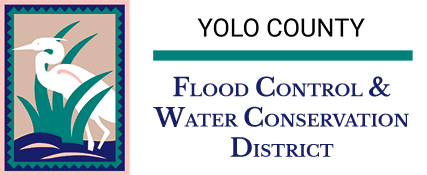The District has long advocated for maintaining the health of local aquifers to help bolster the agricultural economy and heritage of Yolo County. The aquifer underlying the District is recharged from rainfall percolating through the ground, applied irrigation water, and flows from Cache and Putah Creeks. Recharge can either be “direct” or “in-lieu”; direct recharge occurs when rainwater and applied surface water percolates into the ground and to the aquifer, whereas in-lieu recharge occurs when surface water is used “in-lieu”, or instead of, pumping groundwater for irrigation or other uses. The resiliency of the groundwater basin within the District is greatly enhanced by the District’s operations from both direct and in-lieu groundwater recharge.
The construction of Indian Valley Dam, which started releasing water in 1976*, has benefitted groundwater users within the District, with both direct and in-lieu recharge. Analysis of well data and precipitation totals from before and after the 1975-77 drought showed that increased application of surface water from the newly constructed Indian Valley Reservoir helped to restore groundwater storage to pre-drought levels. This was confirmed by the California Department of Water Resources which reported in 1987 that “the large recovery (in groundwater levels) in Yolo County is partly due to new surface water supplies from Indian Valley Reservoir.” The benefit of “in-lieu” surface water to grow crops within the District continues to help protect the health of the aquifer to this day.
Another way that the District has helped to safeguard groundwater supplies is direct recharge from the irrigation canals. Over the years management has made the decision to keep the majority of District’s 150 miles of canals unlined, or earthen, to promote groundwater recharge. In an average season approximately 25 percent of the water diverted into the canal system seeps into the ground and contributes to recharge.
The District has sought to actively recharge groundwater supplies via its stormwater diversion project. Since 2016, when conditions allow, the District diverts Cache Creek stormwater flow into the earthen canals to allow additional surface water to seep into the ground. So far, over 20,000 acre-feet of water has been recharged into the aquifer from this project. In addition, the State of California has mandated that local agencies provide proof that groundwater resources are being managed sustainably. To this end, the District hopes to expand its active groundwater recharge program by working with growers to spread water on fields and idle land to provide additional opportunities for groundwater recharge, as well as other projects in the future.*Indian Valley Dam actually released a very small amount of water in 1975 shortly after construction, and no water was released in 1977 due to extreme drought conditions.
